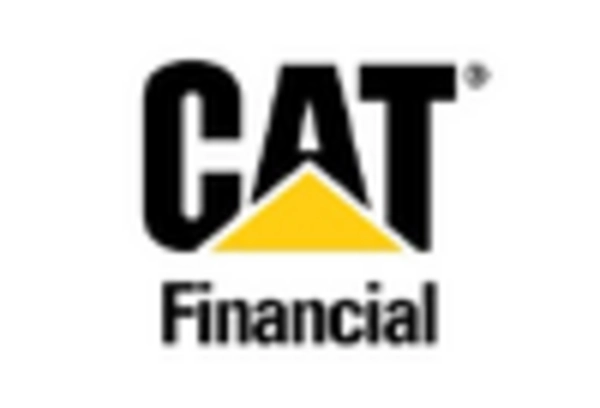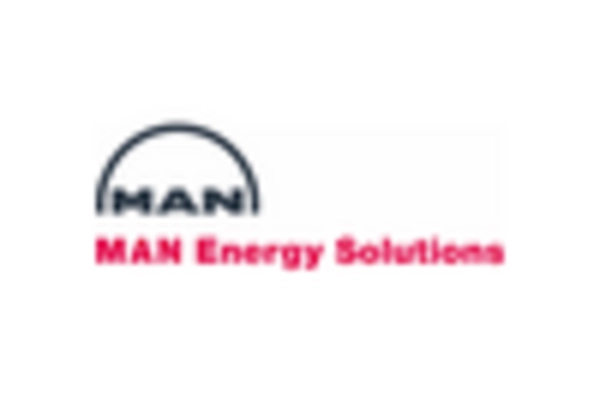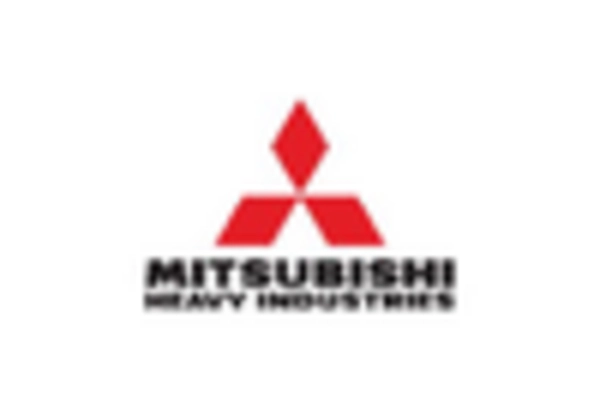Rising Fuel Prices
The dual fuel-engine market in South Korea is experiencing a notable surge due to the rising prices of traditional fuels. As the cost of diesel and gasoline continues to escalate, businesses and consumers are increasingly seeking alternative solutions that offer cost savings. Dual fuel engines, which can operate on both natural gas and diesel, present a viable option for reducing fuel expenses. In fact, the adoption of dual fuel technology can lead to savings of up to 30% in fuel costs. This economic incentive is driving demand within the dual fuel-engine market, as stakeholders aim to mitigate the financial impact of fluctuating fuel prices.
Government Incentives
Government incentives are a key driver of the dual fuel-engine market in South Korea. The government has introduced various financial support mechanisms, including subsidies and tax breaks, to encourage the adoption of cleaner technologies. These incentives are designed to promote the use of dual fuel engines, which are seen as a critical component in achieving national energy and environmental goals. By reducing the initial investment costs associated with dual fuel technology, these incentives are likely to stimulate market growth. As a result, the dual fuel-engine market is expected to expand as more businesses take advantage of these government initiatives.
Environmental Regulations
The dual fuel-engine market in South Korea is significantly influenced by stringent environmental regulations. These regulations aim to reduce emissions. The government has implemented various policies to curb air pollution and greenhouse gas emissions, which has led to a growing interest in cleaner technologies. Dual fuel engines, known for their lower emissions compared to traditional engines, align well with these regulatory frameworks. As a result, manufacturers and fleet operators are increasingly investing in dual fuel technology to comply with environmental standards. This trend is expected to bolster the dual fuel-engine market, as companies strive to meet regulatory requirements while enhancing their sustainability profiles.
Technological Innovations
Technological innovations are playing a crucial role in shaping the dual fuel-engine market in South Korea. Advances in engine design, fuel injection systems, and control technologies have enhanced the efficiency and performance of dual fuel engines. These innovations not only improve fuel economy but also reduce emissions, making dual fuel engines more attractive to consumers and businesses alike. The market is witnessing a shift towards more sophisticated dual fuel systems that can seamlessly switch between fuels, thereby optimizing operational efficiency. This trend indicates a promising future for the dual fuel-engine market, as technological advancements continue to drive growth and adoption.
Increased Industrial Demand
The dual fuel-engine market in South Korea is benefiting from increased demand. This demand spans various industrial sectors. Industries such as shipping, construction, and manufacturing are increasingly adopting dual fuel technology to enhance operational efficiency and reduce costs. The ability to utilize natural gas, which is often cheaper and cleaner than traditional fuels, is particularly appealing to these sectors. Reports suggest that the industrial sector's demand for dual fuel engines could grow by over 20% in the coming years. This rising industrial interest is likely to propel the dual fuel-engine market forward, as companies seek to optimize their fuel usage and comply with environmental regulations.

















Leave a Comment